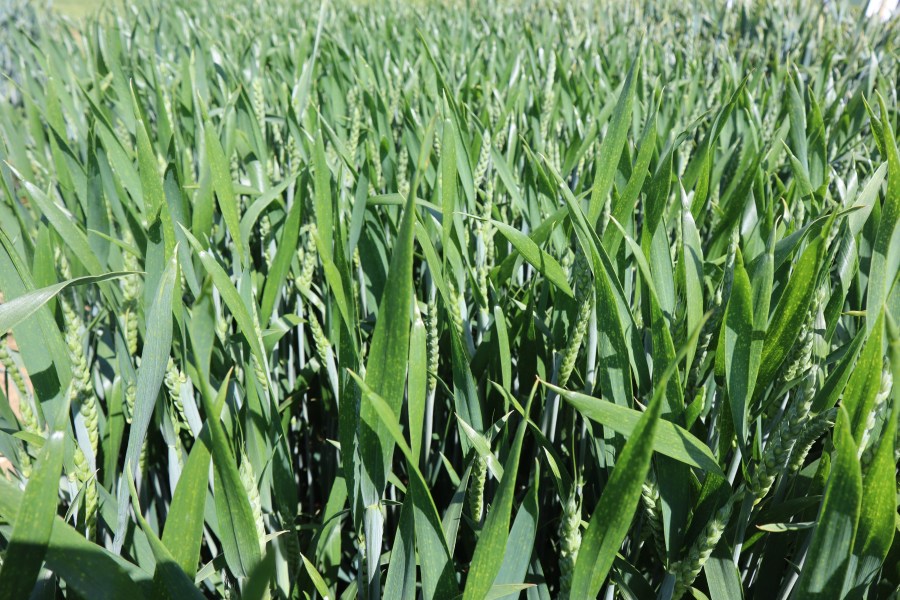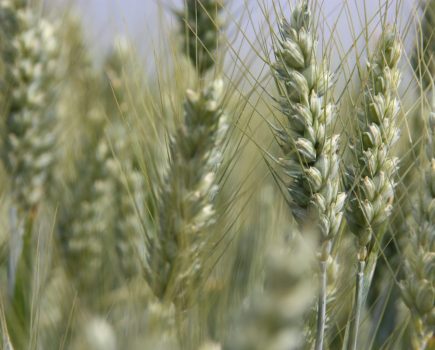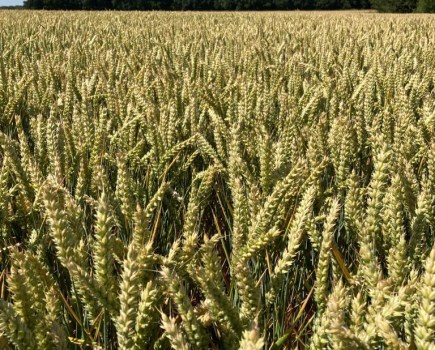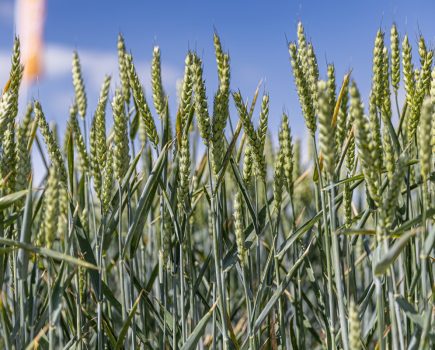Deciding on a variety is a highly personal thing, dependent on the requirements of both an individual farm and its preferred management system. CPM investigates one option which is proving a hit among regen adopters.
“It’s agronomically easy to manage, strong on septoria resistance and has adapted well to a restricted input programme.” DOUGAL HOSFORD
By Janine Adamson and Rob Jones
While securing as much market share as possible with a variety is undoubtedly a goal for most plant breeders, with no two farms the same, offering a range of options is arguably just as important, particularly from a grower’s perspective.
As well as considering factors such as geographical location, soil type and chosen end market, approach to crop management also varies greatly, meaning it’s never as easy as simply selecting the top yielder.
In the case of Group 2 winter wheat Mayflower from Elsoms Seeds, an untreated yield of 91% plus an 8.9 score for septoria has found the variety gaining popularity among growers looking to adopt practices associated with regenerative farming.
One such grower is Dorset-based Dougal Hosford who first grew Mayflower in readiness for Harvest 2024, drilling the variety on 20 October the previous year. He says the crop achieved a yield of 8.4t/ha and was managed without fungicides, insecticides, PGRs or autumn herbicides.
It delivered a specific weight of 78kg/hl, and with all of this in mind, Dougal says he’s chosen to drill Mayflower again for Harvest 25.
“For us, regenerative farming is all about prioritising the health of soil. Yes we have to ensure we grow profitably, but the idea of reducing fungicide inputs shouldn’t be an alien concept given we know synthetic fungicides are likely to harm the naturally occurring fungi in the soil,” he explains.
“Equally, soil health is driven by fungal content so maintaining the fungal:bacteria ratio of any given soil is key. Fungi enhance a soil’s ability to recycle nutrients, increasing their availability to the crop, and are a vital element of the soil microbiome.”
Dougal adds that as a business, they’ve been experimenting with reducing nitrogen and fungicide inputs for around five years, gradually moving from a 4-spray strategy to a 1- or 2-spray approach depending on disease levels.
In fact during the past two years, in some cases, no fungicides have been applied at all. “Although our soil health has improved, overall results have been mixed with some of the better performing septoria-resistant varieties tending to do less well against rust when we’ve applied no fungicides.
“As such, a key building block for regenerative systems is selecting varieties which are capable of producing good yields from a reduced input programme. With a high untreated yield of 91%, very high resistance to both septoria and yellow rust, and with the ability to produce a higher protein percentage in its grain compared with most other varieties grown at the same nitrogen rates, Mayflower’s sustainability credentials are hard to ignore,” stresses Dougal.
He adds that the variety’s disease resistance scores seem to be holding up well year-on-year according to the RL. “That’s a big plus given the usual trend is for ratings to slip back as varieties begin to break down to key diseases.
“For this year’s crop we’ve also cut nitrogen back slightly to 150kgN/ha, and with the dry spring weather until recently, disease pressure has been low. However, we did have to apply a low cost fungicide at around T2 to control rust.”
EASY GOING
Dougal believes that for any farm considering a regenerative approach, Mayflower should offer a lot of what’s required. “It’s agronomically easy to manage, strong on septoria resistance and has adapted extremely well to a restricted input programme so far.
“However for balance, I must add that we’ve only taken it through one full crop year, so we’ll certainly know more about it by September,” he points out.
Matt Fuller of Heathcote Farms in Toddington, Bedfordshire, is cropping 1000ha – half of which is milling wheat, grown mainly as first wheats.
He highlights that although he’s reasonably comfortable with the word ‘regenerative’, it really shouldn’t be classed as a new concept. “This is given the historical importance many farmers have always placed on prioritising soil health to help obtain the best performance from the crops they grow.
“Heathcote Farm has been successfully incorporating regenerative farming techniques into rotations for a number of years, well before regen farming was being hailed as a new concept. Part of the profit we’ve made from our crops has always gone back into reinvestment on soil conditioners and composting, both key strategies for improving soil health,” explains Matt.
The farm first identified Mayflower in early 2023, shortly after it had arrived on the RL. “The obvious attraction was its overall disease package with a 9 for yellow rust and at that point, an 8.4 on septoria which has since climbed to 8.9.
“With 500ha of winter wheat to manage we want to spend as little time as possible chasing disease, particularly when the block of Mayflower we’re currently growing is eight miles from the main farm site.
“With a final yield of 11.59t/ha from our first crop of Mayflower in 2024, it was our highest yielding milling wheat last year and, in a tough year for protein levels, its 12.3% was more than acceptable.”
For the upcoming Harvest 25, Matt says he’s increased the area of the variety slightly to 72ha, established on chalky soils on a site where high yields have been recorded historically. “The drier conditions until now have helped to reduce disease pressure this spring and Mayflower was looking green and lush on 12 May when we applied a T2 of Ascra Xpro (prothioconazole+ bixafen+ fluopyram) at 1.5 l/ha with some liquid manganese.
“The lower disease pressure has allowed us to scale back fungicide inputs and focus on the application of biostimulants and crop nutrition. Overall, Mayflower has received four nitrogen splits totaling 230kgN/ha; while some of our other milling varieties are under pressure from new strains of yellow rust, Mayflower is still looking remarkably clean.”
If Mayflower yields well and records protein levels of 12.5%, Matt believes he’ll drill it again for next season. “As a variety it fits our September drilling window, stands well, shows good vigour particularly in early spring, and is easy to manage.
“For anyone looking for a high output-low input winter wheat to grow within a regenerative-style system, Mayflower is worth considering,” he concludes.
This article was taken from the latest issue of CPM. Read the article in full here.
For more articles like this, subscribe here.
Sign up for Crop Production Magazine’s FREE e-newsletter here.




